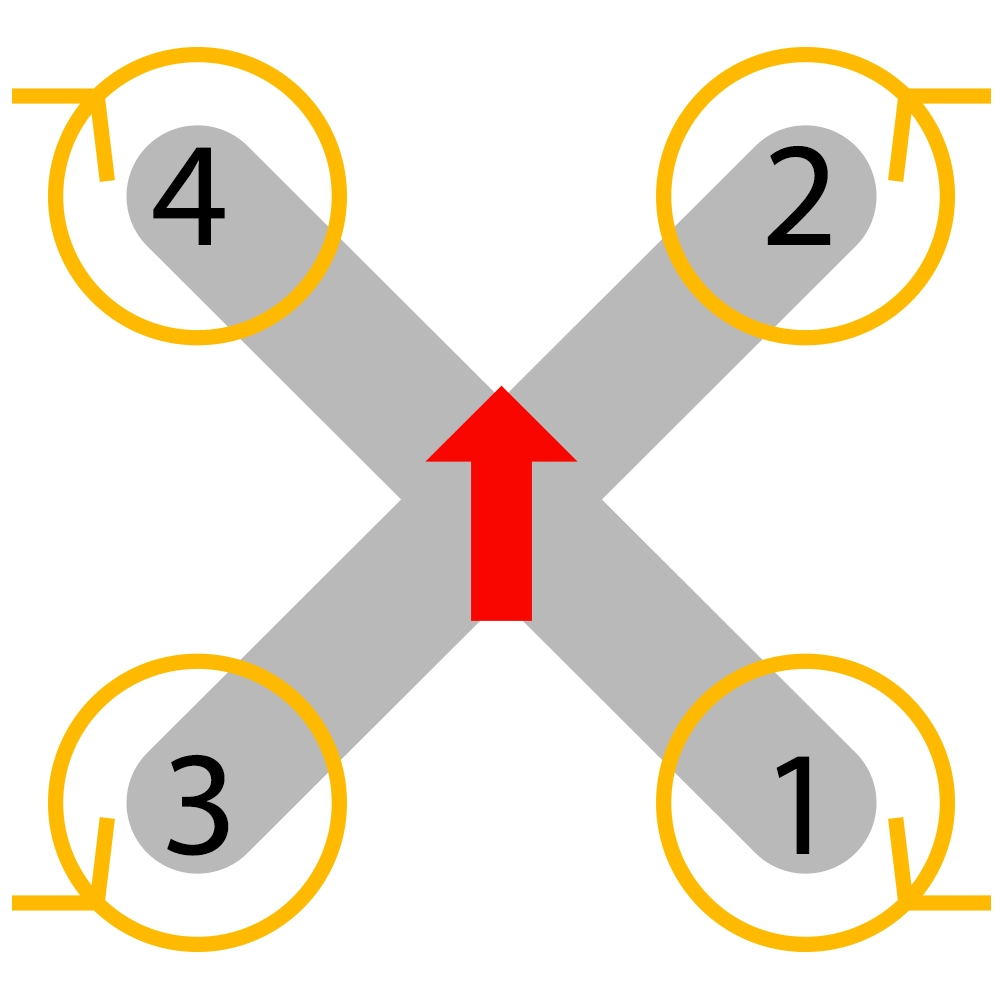Flight Control Basics
Flight Controls

Throttle: Increase or decrease altitude by increasing the speed of all motors.
Roll: Rolls the aircraft left and right by increasing the speed of motors only on the side opposite of the flight direction (if moving the aircraft right, left side motors will increase in speed and right side motors will decrease in speed)
Pitch: Pitches the aircraft forwards and backwards by increasing the speed of motors only on the side opposite of the flight direction (if moving the aircraft forwards, back side motors will increase in speed and front side motors will decrease in speed)
Yaw: Controls the aircraft's heading/rotation. In the diagram below, motors 1 and 4 spin clockwise, while 2 and 3 spin counter-clockwise. To yaw right, the speed of motors 1/4 will increase, while 2/3 will decrease.

Progression Scheme
Always make sure you're flying in position mode with the UAV facing the same direction as the pilot.
Start with a takeoff, using only throttle input
Using only pitch control, slowly maneuver the aircraft forwards. Release pitch control to allow the UAV to come to a stop. Slowly maneuver the aircraft backwards, again allowing it to come to a stop.
Perform the same maneuvers, but this time only with roll control.
Perform a box maneuver, using only pitch control. The UAV heading should face forwards for the duration of the maneuver. Perform both clockwise and counter-clockwise box patterns.
Bring the UAV to a stop. Yaw the UAV left and right slowly.
Combine the two previous maneuvers by flying a coordinated box pattern. At each corner of the box, yaw the UAV so the heading is always facing the direction of flight. Perform this maneuver clockwise and counter-clockwise.
Perform coordinated circles, using yaw and pitch input to slowly rotate the aircraft as it maneuvers forwards, creating a circle. Do this in both directions.
Repeat steps 5, 7, and 8 with the UAV now facing the pilot. Note that control inputs will feel backwards now.
Perform figure 8 maneuvers by performing two connected coordinated circles in opposite directions.
General Tips
Ease into piloting
Start with slow, controlled movements
Start by only maneuvering the aircraft in one degree of freedom at a time
Build confidence over numerous flights
Start small
Smaller aircraft are less expensive and easier to repair
Some especially small aircraft, such as nano quads, can be bought online for less than $50 and make great training platforms since they'll provide minimal attitude stabilization, and won't provide position or altitude stabilization at all
Small aircraft can be flown even in your own home with little risk of damaging your belongings
Flying in this environment gives an opportunity to hone your skills in a low-risk, low-tension environment at your own pace
UAVs are tools, not toys. Some aircraft cost tens or hundreds of thousands of dollars, and can be very dangerous in untrained hands. Take the responsibility of piloting seriously. Obey all laws and regulations at all times. Be safe, be cautious, and be alert.
Last updated